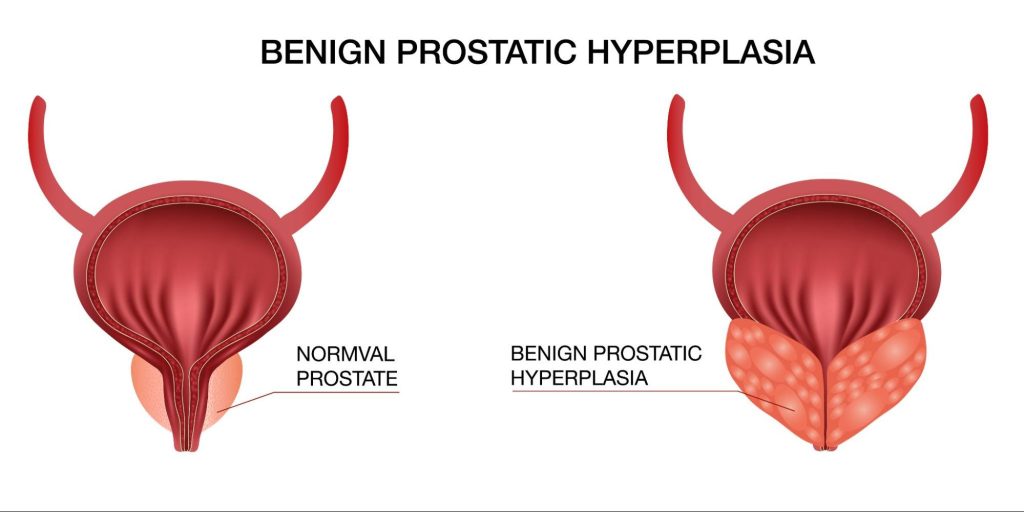Prostate Artery Embolization
What is the Success Rate of Prostate Artery Embolization?

by admin
22nd September 2023
6 minutes read
When it comes to treating an enlarged prostate, a condition known as Benign Prostatic Hyperplasia (BPH), men today have more options than ever. Traditional BPH treatments have included medication and surgery, but a newer, minimally invasive procedure called Prostate Artery Embolization (PAE) has been gaining attention. The question for many men is, “What is the success rate of Prostate Artery Embolization?” This article delves into the details of PAE, its effectiveness, and the factors contributing to its success rate.
Understanding the Prostate Gland and BPH
The prostate gland, part of the male reproductive system, is a small organ located just below the bladder. It surrounds the urethra, the tube that carries urine from the bladder out through the penis. The prostate gland produces seminal fluid, which nourishes and transports sperm.
As men age, it’s not uncommon for the prostate gland to enlarge, a condition known as Benign Prostatic Hyperplasia or BPH. This prostate gland enlargement can compress the urethra, leading to a host of bothersome prostate symptoms. Men with BPH may experience increased frequency and urgency of urination, difficulty starting and stopping urination, a weak urine stream, and nocturia, which is the need to urinate multiple times during the night.
The exact causes of BPH are not fully understood, but it’s believed to be linked to hormonal changes as men age. Regardless of the causes, BPH can significantly impact a man’s quality of life, and finding an effective BPH treatment becomes crucial.
Traditional BPH Treatment Options
Before we discuss PAE’s success rate, let’s briefly review the traditional treatment options for an enlarged prostate. Initially, BPH symptoms are managed conservatively, such as with lifestyle modifications or medication. However, as the condition progresses, more invasive treatments may be required.
The traditional surgical procedure, known as transurethral resection of the prostate (TURP), has been the gold standard for BPH treatment. While effective, TURP comes with potential risks such as bleeding, infection, and complications like sexual dysfunction and urinary incontinence.
Given these risks, there has been a strong drive in the medical community to find safer, less invasive treatments for BPH, which is where Prostate Artery Embolization comes in.
Prostate Artery Embolization: A Minimally Invasive Option
Prostate Artery Embolization is a minimally invasive procedure performed by a radiologist. The procedure involves blocking the blood supply to the enlarged prostate, causing the prostate tissue to shrink and relieve the urinary symptoms of BPH.
During PAE, a catheter is inserted into an artery in the groin or wrist and guided to the prostate arteries using X-ray imaging. Microscopic particles are then injected into the arteries supplying the prostate, blocking blood flow to the organ. As a result, the prostate shrinks, relieving pressure on the urethra and improving urinary symptoms.

Evaluating the Success Rate of Prostate Artery Embolization
Now, onto the main question – how successful is PAE in treating BPH?
Studies show that PAE is quite effective in relieving the urinary symptoms of BPH. A 2019 review of multiple studies, published in the American Journal of Roentgenology, reported that about 76% to 96% of men experienced significant improvement in their urinary symptoms after undergoing PAE. Moreover, the review found that these improvements were maintained for up to three years following the procedure.
Another systematic review and meta-analysis, published in 2018 in the journal Clinical Radiology, reported a similarly high success rate for PAE. This study found significant improvement in urinary symptoms in approximately 78% to 89% of patients up to two years after PAE.
Notably, PAE’s success rate is comparable to that of TURP, but with fewer risks and complications, making it an attractive option for men who may not be candidates for traditional surgery.
Factors Influencing the Success Rate of PAE
The success of PAE is influenced by several factors. For one, the size and shape of the prostate gland can affect the procedure’s success. For instance, very large prostates may require more than one PAE procedure to achieve desired results.
The interventional radiologist’s experience and skill also play a vital role. As with any procedure, the more experienced the physician, the more likely the procedure will be successful.
Patient selection is another critical factor. Not all men with BPH are suitable candidates for PAE. For example, men with other prostate conditions, such as prostate cancer or acute urinary retention, may not be good candidates for the procedure.
Finally, patient compliance with post-procedure instructions and follow-up care can also impact the success of PAE.
Conclusion
To sum up, Prostate Artery Embolization is an effective and minimally invasive treatment option for men with BPH. It offers a high success rate, comparable to traditional surgical procedures, but with fewer complications and a quicker recovery time. However, its success can be influenced by several factors, including the size of the prostate, the skill of the practitioner, patient selection, and post-procedure care.
While PAE is a promising BPH treatment option, it’s crucial to have a detailed discussion with your healthcare provider to understand the benefits and potential risks, and to determine whether it’s the right choice for you. Remember, taking charge of your prostate health is vital, and the first step in this journey is understanding the various treatment options available.
How Can Medfin Help?
Medfin is a daycare surgery expert providing access to the latest surgical procedures and top doctors in your city at affordable prices. Medfin provides you access to top doctors and surgeons with 10+ years of experience. With Medfin, you can leave your hassles behind and focus on your health. From instant consultations to paperwork assistance, we have got you covered with everything. So why wait? Call us today!
FAQs
PAE is less invasive than surgery, has a lower risk of complications like sexual dysfunction or incontinence, and allows for quicker recovery.
Men with bothersome BPH symptoms that haven’t responded to medications, or those who cannot undergo surgery due to other health issues, are potential candidates for PAE.
While generally safe, potential side effects may include minor bleeding at the catheter insertion site, urinary tract infections, or temporary urinary or rectal discomfort.
PAE has been shown to significantly improve urinary symptoms and quality of life in men with BPH, with effects often seen within days after the procedure.
Typically, PAE is an outpatient procedure, and patients can usually return home the same day. Your doctor will provide specific post-procedure instructions.
CATEGORIES
- ACL Reconstruction
- Anal Fissures
- Anal Fistula
- Appendicitis
- ASK A DOCTOR
- Benign Prostatic Hyperplasia
- Breast Lump Excision
- Cataract
- Circumcision
- Conditions & Diseases
- Cosmetology
- Covid-19
- Cure
- Endocrinology
- ENGLISH VIDEOS
- Eye Care
- Gallstones
- General Surgeries
- Government Schemes
- Gynaecology
- Gynecomastia
- Health
- Health Insurance
- Hernia
- Hindi
- Hip Arthoscopy
- Hip Replacement
- Hip Replacement Surgery
- Hydrocele
- Kannada
- Kidney Stones
- Knee Arthroscopic
- Laparoscopic
- LASER
- Latest Treatments
- Lifestyle
- Liposuction
- Medfin Stories
- Medicine
- Nephrology
- Ophthalmology
- Orthopaedic
- Paraphimosis
- Patient Testimonials
- PCL Reconstruction
- Phimosis
- Piles (Hemorrhoids)
- Pilonidal Sinus
- Proctology
- Prostate Artery Embolization
- Rhinoplasty
- Second Opinion
- Total Knee Replacement
- Urology
- Uterine Artery Embolization
- Uterine Fibroids
- Varicocele
- Varicose Veins
- Vascular
- VIDEOS






